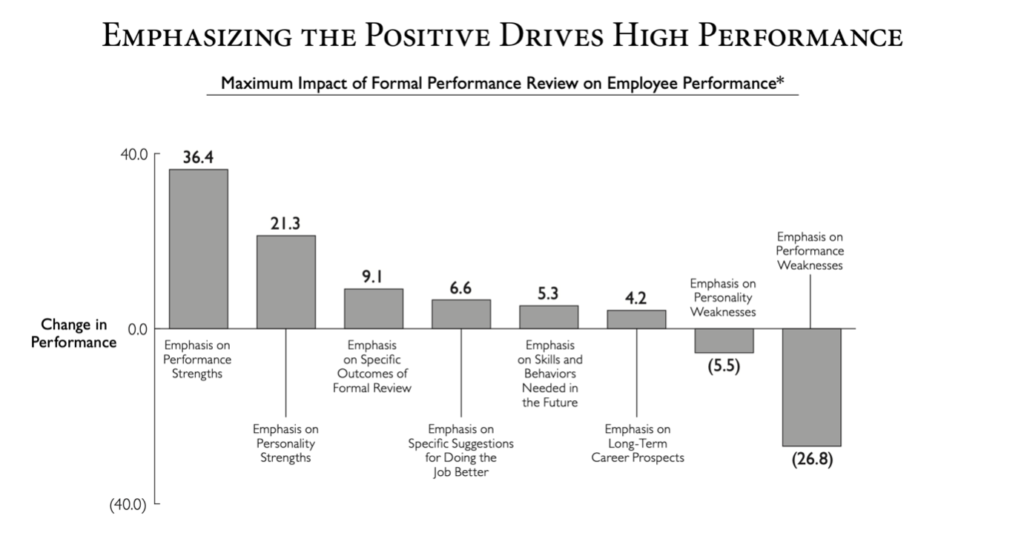Giving feedback and delivering performance reviews are two of the most fraught leadership (and management) responsibilities we can face; but they don’t have to be. The traditional ways of doing both are based on mostly one-way traffic, from the feeder to the fed, and that immediately says that “I know more than you” and sets up a power gradient. Trying to maintain trust and engagement in this atmosphere is not easy, so we reach for the sandwich to make it easier – for us.
Pitfalls of the Sandwich – When trying to soften feedback using the sandwich or bathtub[i] technique, the risk is that the recipient will either not hear the constructive feedback, or think that you are being less than honest. Kate Neilson explained this nicely in her 2019 article “Why sandwiching your feedback is hurting you”, which I recommend reading.[ii]
Succinctly, “While a manager might intend for their ‘sandwich’ to be cloaked in the smoke and mirrors of ‘clever’ psychology, it’s likely the recipient will see through it. Not only is this likely to damage the ongoing relationship between the two, but there’s also a chance the intended message will be completely lost, rendering the whole process useless.”
We Want Performance After a Performance Review – A 2002 study[iii] by the Corporate Leadership Council (now Gartner for HR) on “Building the High-Performance Workforce A Quantitative Analysis of the Effectiveness of Performance Management Strategies” gave further insight into effective performance feedback in the section titled “Formal Performance Review: The Delicate Balance Between Praise and Critique”. The following graph says it all:

They measured a performance increase of 36% when the annual review focussed on performance strengths, a 27% drop when focussed on weaknesses and a bunch of moderate increases in the middle where the employee is told what needs to be done to improve. The middle is where most reviews sit, though unfortunately many lean to the right and emphasize weaknesses. The shape of the graph for informal feedback …“tell me how I am going”… is similar. So how do we aim for the 36% improvement while correcting performance weaknesses? The answer lies in taking a coaching approach.
A Coaching Approach to Performance
Workplace Coaching – Let’s first understand what coaching is in the workplace. It is not training, where the transfer from the trainer to the trainee is knowledge and skills. It is not mentoring, where the transfer is guidance, wisdom, and experience. It is empowering a person to make their own decisions and to build their performance through goal-setting and personal growth. It is not solutionizing, directing, and micro-managing; it is providing people with the skills, resources, knowledge, and authority to perform the job they signed up to do.
Constructive Feedback – Feedback has a place in all of this, but style and timing have to change to meet the outcome we want, so it will be different in different stages of training and when mentoring, for example. Feedback also has some unchanging characteristics if it is to be effective, as mentioned in an earlier blog on this site, and it is important to praise good work as well as correct errors. It should be the normal way of doing things so that people are comfortable receiving feedback.
Feedback:
- Should happen close to the event that needs feedback. If necessary, take some time to think about the feedback so there is no emotion involved, especially if the event angered you. Then have the conversation before the event is forgotten.
- Should be factual and specific, and make it about the event, mistake, or behavior, not about the person who was involved. For example, “You missed a deadline twice”, not, “You are hopeless at meeting deadlines”.
- Should be a two-way conversation so the person has a chance to explain what was behind their action and to ask questions for them to learn.
- Should always have a positive intent; the outcome must be good for the person, good for you, and good for the organization.

What Is Different About the Coaching Approach? – essentially, a coaching approach is to normalise feedback as a positive activity, making it more regular than once a year and eventually even continuous. The frequency will depend on what is best for the person, you, and the organisation, but every three months might be a good start. There may be a need for correction of discrete mistakes or lapses at any time of course, but these are easier to handle if feedback is normalised.
Start with Reflection – Starting with the person reflecting on their performance and achievement/progress on goals is a great way to open up the conversation. They know better than anyone how they perform, so encourage them to mention the positives as well as where they think they could improve.
Questions are Key – Ask good questions about this reflection, questions that help the coachee understand the assumptions and perhaps barriers that are holding them back.
Give your honest observations, being positive about what you have seen, and note any areas where performance needs to be strengthened. Ask what is needed for the person to strengthen performance and agree on how it can be achieved. (If it is obvious that the person has not been provided with the skills and resources to do a job – that is feedback for you, not them). Also, ask about their strengths and how they can help them achieve their goals.
What is a Good Question? – A good question is simple, invites a thoughtful response, and is followed by listening.
Finish with Agreed Goals – The feedback session should end with the coachee having a clear idea of what they need to achieve to meet performance expectations. Remember that the person is in the role because they met the engagement criteria; they had the strengths and attributes you wanted, so coach them to frame the agreed goals themselves and they are more likely to achieve them than if you set the goals.
What of the Annual Performance Review? – You should not be waiting 12 months to review performance; that is fair to no one. If you are doing feedback right and empowering your people to be the best they can be, there should be no surprises at the Annual Performance Review. In fact, you should change the name to Annual Performance Action Plan where you can set out agreed Learning, Development, and Performance goals for the next 12 months with that valuable member of your organization.
What About My Feedback? – Leaders need feedback too, so they can grow and perform at their best. Receiving feedback will be covered in a later blog entry.
Stay Curious, Be Kind.
[iii] Found at https://marble-arch-online-courses.s3.amazonaws.com/CLC_Building_the_High_Performance_Workforce_A_Quantitative_Analysis_of_the_Effectiveness_of_Performance_Management_Strategies1.pdf

Ian Scott is a Leadership Coach, Facilitator, and Mental Health First Aid Instructor based in New South Wales, Australia. Ian served as a pilot in the Royal Australian Air Force, and is the recipient of the Order of Australia Award. Ian has a MA in Strategy from Deakin University and an MBA from Macquarie University. Ian is a member of the Rotary Club of Central Blue Mountains for over 20 years, a Past Rotary District Governor, and a proud member of the Rotary Fellowship of LEAD.

